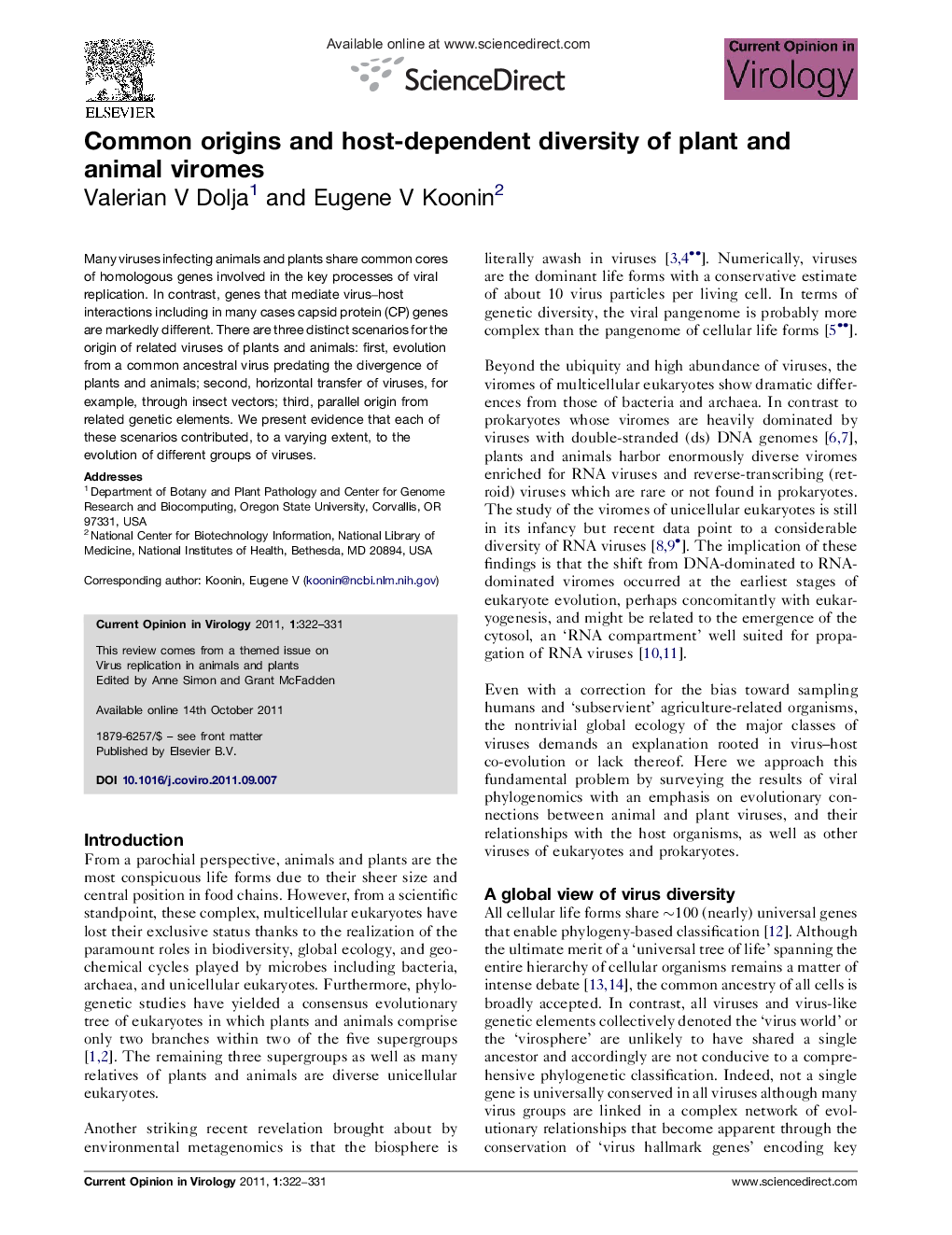| Article ID | Journal | Published Year | Pages | File Type |
|---|---|---|---|---|
| 2473560 | Current Opinion in Virology | 2011 | 10 Pages |
Many viruses infecting animals and plants share common cores of homologous genes involved in the key processes of viral replication. In contrast, genes that mediate virus–host interactions including in many cases capsid protein (CP) genes are markedly different. There are three distinct scenarios for the origin of related viruses of plants and animals: first, evolution from a common ancestral virus predating the divergence of plants and animals; second, horizontal transfer of viruses, for example, through insect vectors; third, parallel origin from related genetic elements. We present evidence that each of these scenarios contributed, to a varying extent, to the evolution of different groups of viruses.
► We present an overview of the evolutionary relationship between plant and animal viruses. ► In many virus families, related plant and animal viruses share suits of homologous genes involved in genome replication but possess distinct virus-host interaction modules. ► Three processes contributed to the evolution of related viruses in plants and animals: i) evolution from a common ancestral virus predating the divergence of plants and animals; ii) horizontal transfer of viruses, for example, through insect vectors; iii) parallel origin from related genetic elements.
